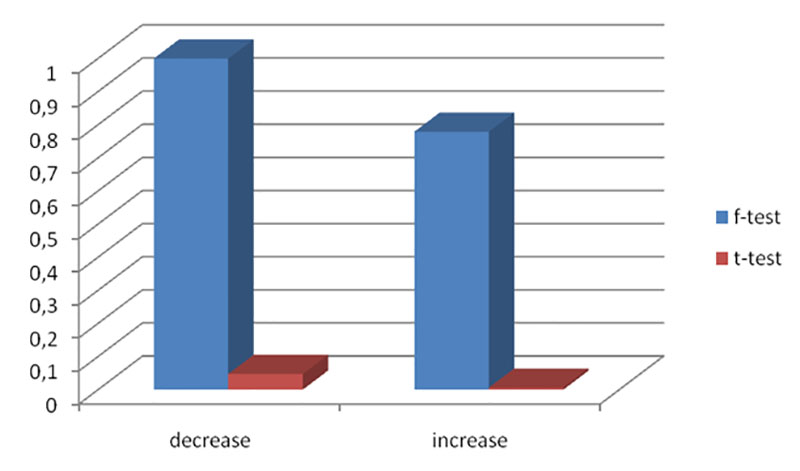Prakash Krishnan, Trinus K.
Kyiv, Ukraine
Introductiion
Idiopathic intolerance to environmental electromagnetic fields (IIE-EMF) or hypersensitivity to environmental electromagnetic fields (HE-EMF), which is also called hypersensitivity to electric fields (HEF) or electric sensitivity (ES) means a set of complaints of unpleasant medical symptoms, which 5% of the Global population relates to the influence of EMF [Electromagnetic fields and public health: Electromagnetic Hypersensitivity, World Health Organization (WHO) 2005].
They report about intensive headache, dizziness, fatigue, tinnitus, memory problems, palpitations and skin symptoms [Carlsson F., et al., 2005]. The HE-EMF patients are indicating the influences of the fields having power several orders lower, than estimated by international safety standards, which are related to the threshold of temperature effects of EMF. Clinical trials have not provided unequivocal results from the point of view of evidence-based medicine. That is why HE-EMF is not recognized to be medical condition by medical and scientific societies [Roosli M., et al., 2004].
From the other side, starting somewhere in 70th there appeared the signals about EMF hazards, which are covering the Globe. The problem is raised in the context of “cancer against progress” [Bailer J.C., Smith E.M. 1986]. Studies, conducted by National Cancer Institute in USA, reveal statistically significant correlation between occupational exposure to EMF and brain cancer [Thomas, T. L., et al., 1987], the same results are presented by the Swedish National Cancer Register [Vagero D., Olin R. 1983].
Taking into consideration the fact that primary magnetic impulse sensor is located in the macula of vestibular labyrinth it has been shown its high sensitivity even to handy phone irradiation in patients [Trinus K., et al., 2016]. From the other side the authors have not performed control investigations of the healthy persons, the problem which has become the objective of our study.
Materials and methods
We have examined 20 healthy volunteers (students), who agreed to pass the examination free with the average age of 19.45±1.86 years with no vertigo or dizziness complaints.
We have used Uemura test – standing at one foot with eyes closed. If the patient is stable at one foot with eyes closed more than 10 s he is considered to be healthy.
Uemura test is evaluated in 5 point score:
- 0 points – patient is stable 10 s with eyes closed at one foot;
- 1 – undulating moderately, but keeping balance;
- 2 – hands are needed to keep balance (hand is reaching shoulder level);
- 3 – cannot stand at a spot or stands 3-10 s;
- 4 – cannot stand at one foot even 3 s;
- 5 – cannot stand even at two feet.
All the examination results have been video recorded. We have recorded Uemura test two times: one control investigation and second one after 10 minutes listening of advertisement from mobile phone.
Results
Our data indicate that out of 11 persons examined in five persons no changes of coordination performance has been detected, two have improved their coordination and four have worse coordination after listening handy. The exact data are:
- Before irradiation – 1.25±0.97 points,
- After irradiation – 1.60±1.05 points.
The data have not been statistically significant according to both quantitative (T-test p=0.28) and qualitative (F-test p=0.73) criteria.
Summarizing the results obtained we can see that after mild electromagnetic irradiation most healthy persons have worsened coordination performance (45%, 9 persons), some less –it not changed (40%, 8 persons), and least persons – improved their coordination performance (15%, 3 persons).
Comparison of the three groups we have seen that in the group of coordination function no-changes the score appeared to be – 0.88±0.83 points, with worsened function – 1.11±0.78 points, and improved – 2.67±0.58 points.
All the differences appeared to be statistically insignificant according to F-test and significant according to t-test as it is seen from Fig. 1. This means that we have found only quantitative changes in groups before and after irradiation and no quality changes have been found.

Discussion
In the case of patients with vestibular disorders it has been shown that electromagnetic irradiation causes worsening of the coordination performance [Trinus K., et al., 2016]. In our case with healthy young persons, we see the quantitative changes of the performance which does not influence health condition. As the amount of persons studied is limited, more investigations are necessary to make important conclusions.
